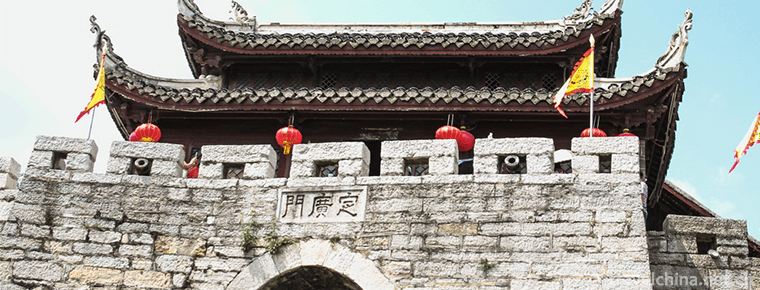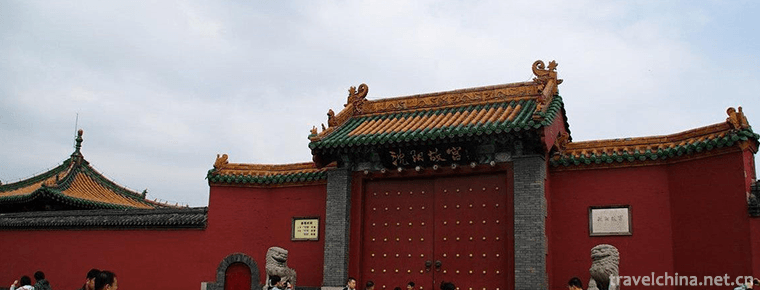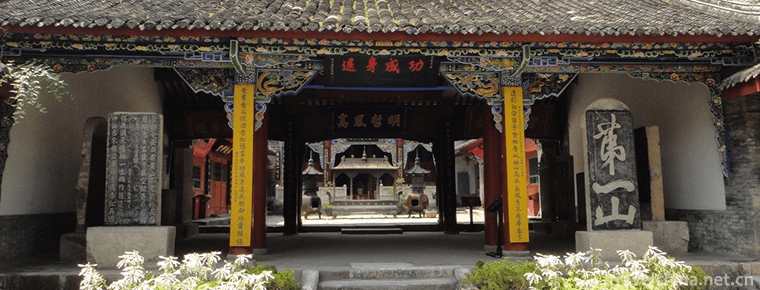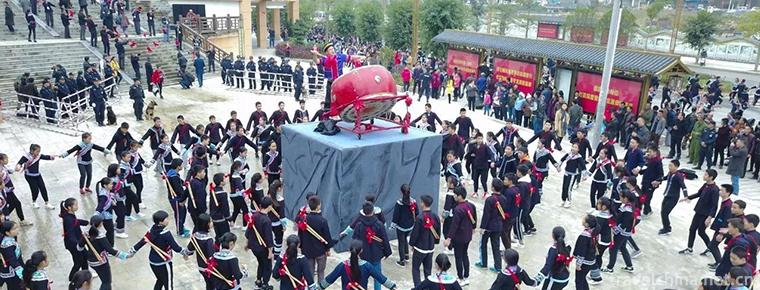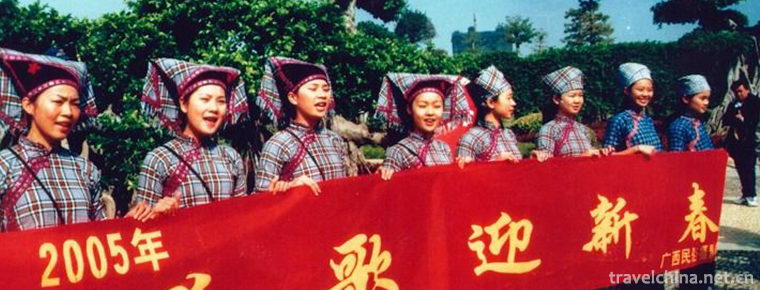Proverbs Shanghai Proverbs
Proverbs Shanghai Proverbs
Shanghai proverb, also known as Shanghai proverb, is the traditional folk oral literature in Shanghai. Local gossip. It belongs to one of the national intangible heritage.
Background
"Just learned to look like seven, Shanghai is changing again."
—— Shanghai Proverbs Selected into the National List of Non-Heritage Sites
Zhou Libo's gimmicks and jokes are nothing special. There are 3500 Shanghai proverbs in the stomach of Chen Hang area in Minhang. People who can laugh when they meet people don't.
Fewer than hundreds of people, especially in these two days, after learning that Minhang's "Shanghai proverb" has entered the third batch of national intangible cultural heritage list, "wonton wrapped in gluten, a piece of local people" such a common saying that stresses unity and progress can roll out from their tongue at any time...
The word "Shanghai proverb" has long existed.
Source
Zhang Naiqing, who has just retired from the Minhang Conservation Center for the Non-Heritage Sites, has studied folk customs for decades. Since the 1980s, he has carried out the "Five Integration Work of Folk Culture", the so-called "Five Integration Work", namely legends, stories, proverbs, ballads and so on. Zhang Naiqing and more than 300 staff spent a year collecting about 1000 proverbial ballads in the field village. When a policeman from the police station delivered the book "Shanghai Proverbs" compiled in 1914, he suddenly found that the team's achievements in one year were not as good as this book, which contained more than 2000 pieces.
The origin of the word "Shanghai proverb" lies in this book, which was compiled by Hu Zude, a local gentleman in Chen Xingzhen, and divided into two parts. In addition to the "cultural space of old ballads and proverbs" compiled when applying for "non-relics" at the municipal level and the "new edition of Shanghai proverbs", the number of "Shanghai proverbs" is about 3000. "We haven't included them in the last 10 years yet," Zhang explained, "because proverbs have to stand the test of time."
Striking one snag after another
Successful application
If it had not participated in the declaration of the third batch of national "non-heritage" lists, the popular folk proverbs in Chen Xing area had not been identified as "Shanghai proverbs". Initially, it was called "Chen Xing Folk Literature" and included "Five Integration". However, when declaring the list of "non-relics" at the municipal level in 2007, experts believed that the concept of "folk literature" was too broad, so it was better to change it into "old folk proverbs". Although "old folk proverbs" sound like "old folk rumors", which makes Chen Xingren unhappy, professionals point out that "old folk proverbs" is well known in academia. Therefore, they participated in the second batch of applications for the national non-heritage list in 2008 under the name of "old folk songs and proverbs". As a result, they were unsuccessful.
Zhang Naiqing immediately invited experts from Beijing to "consult" and came to the conclusion that the positioning was not accurate enough. Although Chen Xing was the birthplace of Shanghai Chenghuang, there have been 21 villages since the Qing Dynasty. No matter how the history and region of Shanghai changed and divided, Chen Xing has been in the boundaries of Shanghai for more than 700 years. Although Pujiang Town has been administratively designated in recent years, the name "Chen Xing" is still well known in the Yangtze River Delta. However, if we go to the whole country, Shanghai will surely be more famous than Chen Xing. Therefore, the third Rename is "Shanghai Proverbs".
Local gossip
Rich essence
Strictly speaking, "Shanghai proverb" is not equivalent to "Shanghai proverb", because "Shanghai" has long been scattered in all directions, and "Shanghai gossip" is not only integrated into Ningbo, Yangzhou and other local dialects, but also into many English and Japanese. Zhang Naiqing said that the exact definition of Shanghai proverbs is "Shanghai local rural proverbs collected in the Chen Xing area". "Language runs in and out with people." Shanghai proverb does not contain the proverb "flying in from other places".
Shanghai proverbs from daily life can be divided into five categories according to their contents: current affairs, culture, reason, social relations, production and nature. They have five characteristics: first, they use the old-fashioned Shanghai dialect of the original ecology, which can be called "historical living fossil" and "cultural local products". Second, it truly reflects the old rural farming life and the common people's life style in Shanghai. Thirdly, most of the oral creations of people who do not know books but are "Dali" are vulgar and less elegant, but "vulgar and tolerable". Fourthly, because of the large population, popular customs, wide range of subjects and endless emergence, the amount of entries is greater than that in areas with a single social form. Fifth, rhetoric means are abundant, discourse is in place, but full of goodwill.
According to Zhang Liming, the head of the "non heritage" protection center, the reason why Shanghai proverbs have been selected in the third batch of national "non heritage" list is that it is the essence of language, and can also reflect the context of urban change, historical evolution, cultural ideas and humanistic values.
Protection and inheritance
Depend on everyone
Although two representative inheritors, Zhang Shimin and Zhou Shuming, from Chen Xing's group literary workers, were identified when Chen Xing's proverbs became "non-heritage" projects at the municipal level, they could only play a leading role in the protection and inheritance of Shanghai proverbs. "Because proverbs are created by groups and spread by groups," Zhang Naiqing analyzed, "unlike some folk artists, they can be inherited by protecting someone and imparting certain skills."
Chen Xing, a 70-80-year-old man, is a master of using the Shanghai proverb. He often gathers together to compete for eloquence. Zhang Naiqing said that "Talking Talents" in Chen Xing area are not like "China's Talents Show, often strange" - everyone is "strange", it is "not strange to see strange". Therefore, they send books to "outsiders" to let them understand the Shanghai Proverbs, or record the "colorful head" of the phonetic semantics.
The loss of Shanghai proverbs is inevitable, and some are eliminated by the times. For example, "wheat firewood stalk blows fire", which means that a hollow tube as small as wheat firewood stalk tries to blow off the stove fire, describing people as stingy. Farmers nowadays use gas stoves to cook, but seldom use stoves. Children may know about straws, but many don't know about wheat stalks. Language runs with life. Zhang Naiqing advocates that Shanghai people not only speak more Shanghai dialect, but also speak more Shanghai proverbs. They learn to speak more Shanghai proverbs. Everyone can say "talk show". Protection and inheritance ultimately depends on everyone.
Several Proverbs in Shanghai
1. "Xixiang Shoutou, come to Dongxiang to see Lutou", "Dongxiangren Bingtou, come to Xixiang to see stone". Pudong and Puxi have been known as "Dongxiang" and "Xixiang" since ancient times, commonly known as "Dongtou" and "Xitou". The phrase "Lutou" comes from Dongxiang and "Stone" from Xixiang reflects the diversity of cultures.
2. "Country girls want to learn the Shanghai style. They just learn the seven-point image, but Shanghai is changing the pattern again." Describes country girls as "catching up with fashion".
3. "Better not to learn, not to use". It refers to the correct attitude towards learning.
4. "Seven people and eight advocates". Describe that everyone wants to make up their minds.
5. "Civilian officers have three hands and military generals have four feet". Describing the old civil service corrupt, military generals run away.
—— From New Edition of Shanghai Proverbs

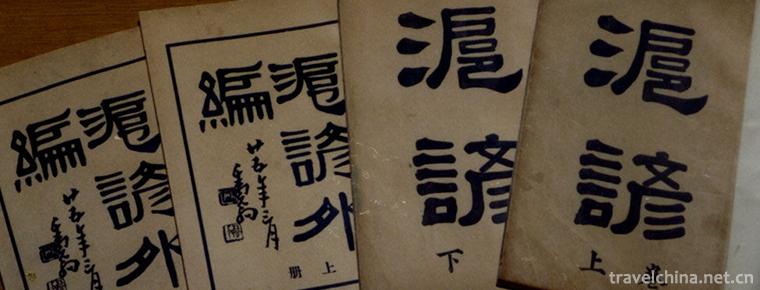
-
Huaxi Qingyan Ancient Town Scenic Area
Qingyan Ancient Town, one of the four ancient towns in Guizhou, is located in the southern suburb of Guiyang City. It was built in Hongwu ten years (1378) of Ming Dynasty and was formerly a military f.
Views: 214 Time 2018-12-12 -
Bayinbrook Grassland Scenic Area
Bayinbrook grassland: formerly known as Yuledus grassland, Zhuledus grassland, Yuludus grassland, because it is mainly located in Xinjiang Bayinguoling Mongolian Autonomous Prefecture .
Views: 87 Time 2019-01-02 -
Heizhugou Scenic Area
Heizhugou National Forest Park, located in Heizhugou Town, Ebian Yi Autonomous County, Leshan City, Sichuan Province, spans Haqu Township, Lewu Township and Jinyan Township..
Views: 220 Time 2019-01-13 -
Longxing Temple
Longxing Temple, alias Dafo Temple, is located in Dongmenli Street, Zhengding County, Shijiazhuang City, Hebei Province. It was originally Longteng Garden of Yanmu Rongxi after the Eastern Jin Dynasty.
Views: 160 Time 2019-02-06 -
Mingyue Gorge Scenic Area
Mingyue Gorge is located in the eastern section of Jialing Jiangxi Lingxia, Guangyuan, Sichuan Province. It covers an area of 6.1 square kilometers and is about 33 kilometers.
Views: 146 Time 2019-02-07 -
Shenyang Palace Museum
The Shenyang Palace Museum, originally a royal palace built and used in the early Qing Dynasty, was built in 1625 (five years from tomorrow, ten years after the fate of the golden emperor)..
Views: 115 Time 2019-02-08 -
Zhangliangmiao Scenic Area
Zhangliangmiao, a holy place of Quanzhen sect, is located at the foot of Zibai Mountain on the southern slope of Qinling Mountains. It is 101 kilometers south of Hanzhong.
Views: 105 Time 2019-03-16 -
Buyi Peoples Changing Dance
The Bouyei people, who can sing and dance well, have created colorful Bouyei culture. Buyi people like singing and dancing to express their feelings whether they.
Views: 102 Time 2019-04-04 -
Mulan Legend Hua Mulan Legend
Mulan legend is one of the Chinese folklores. Mulan legend began in Sui and Tang Dynasty. It is characterized by the spread of Chinese folk oral language in the early period, and then by the appearanc.
Views: 120 Time 2019-06-06 -
Sichuan Book Review
Sichuan commentary, also known as vernacular speech and commentary, is one of the traditional operas in Sichuan Province. It is popular in all parts of Sichuan and Yunnan and Guizhou. The performers t.
Views: 132 Time 2019-06-16 -
Liao Song of the Zhuang Nationality
Liao Ge of Zhuang Nationality, folk literature of Pingguo County, Guangxi Zhuang Autonomous Region, is one of the national intangible cultural heritage..
Views: 141 Time 2019-08-16 -
Flag dress of Qing Dynasty
In the strong feudal ethical atmosphere of the Qing Dynasty, it is impossible for women to show their curves as modern. In the Qing Dynasty, the cutting system of flag dress always adopted straight line, and the chest, shoulder, waist and buttocks were .
Views: 65 Time 2020-12-11
